
How to Use XIAO_ESP32S3: Examples, Pinouts, and Specs
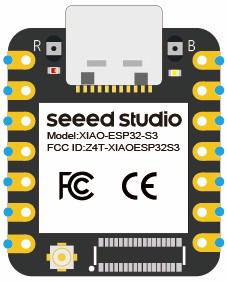
 Design with XIAO_ESP32S3 in Cirkit Designer
Design with XIAO_ESP32S3 in Cirkit DesignerIntroduction
The XIAO_ESP32S3 is a compact microcontroller board powered by the ESP32-S3 chip. It is designed for Internet of Things (IoT) applications, offering built-in Wi-Fi and Bluetooth Low Energy (BLE) capabilities. Its small form factor and powerful features make it ideal for projects requiring wireless connectivity, such as smart home devices, wearable technology, and remote monitoring systems.
Explore Projects Built with XIAO_ESP32S3
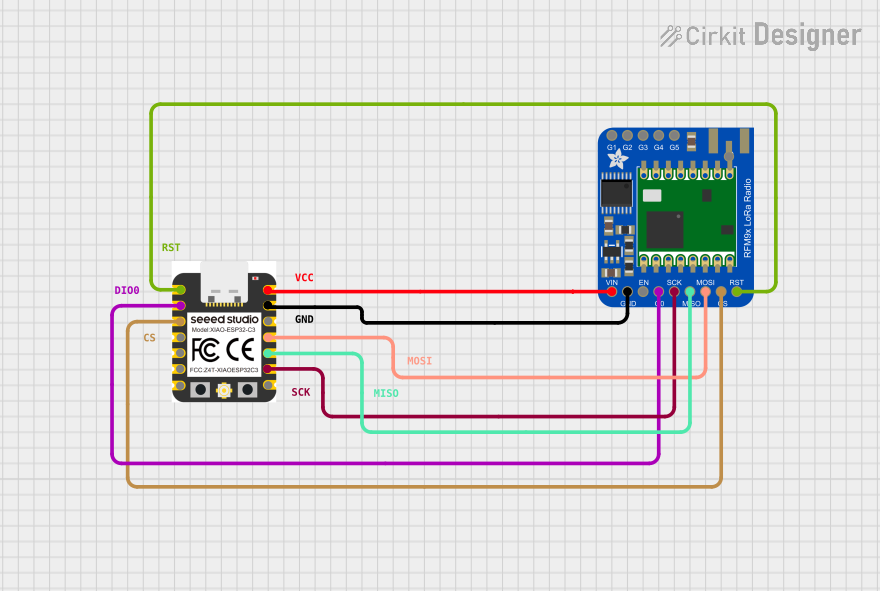
 Open Project in Cirkit Designer
Open Project in Cirkit Designer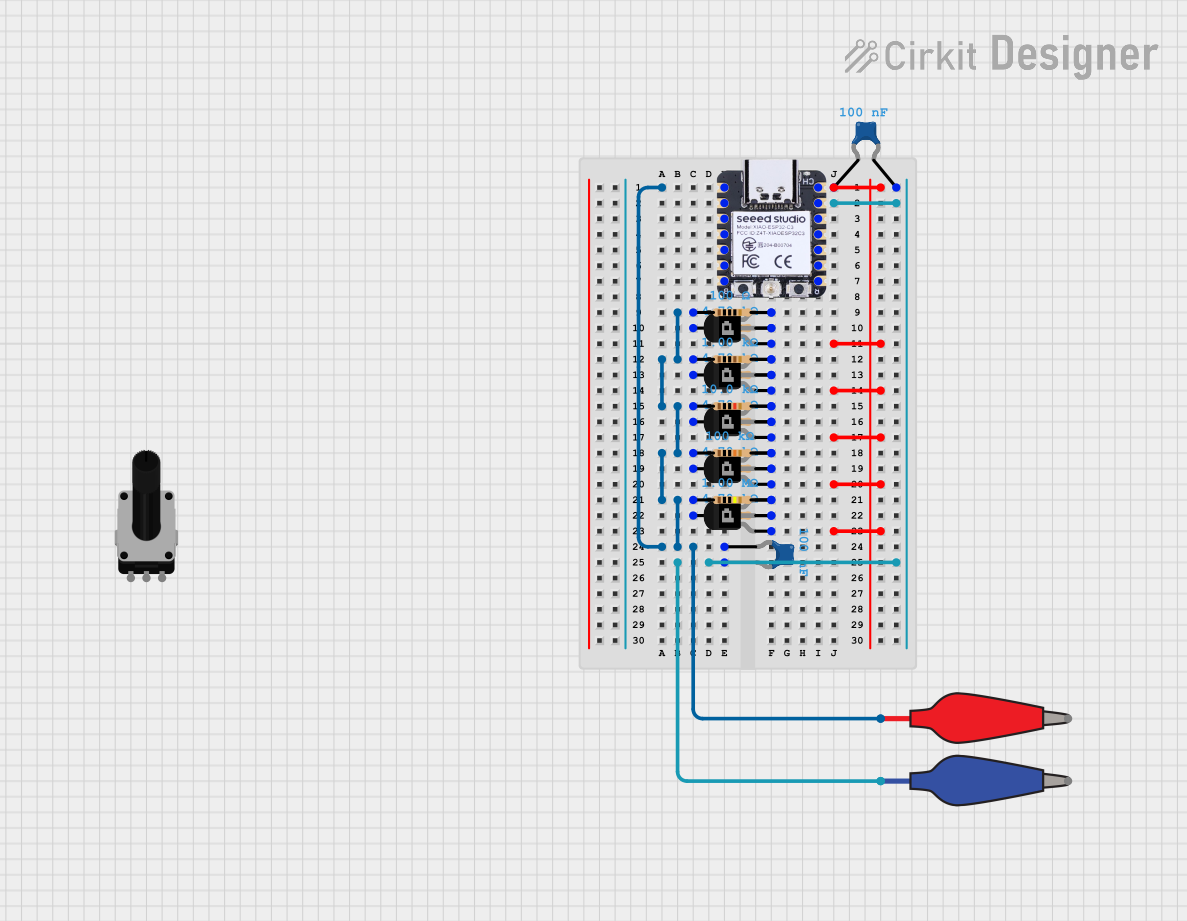
 Open Project in Cirkit Designer
Open Project in Cirkit Designer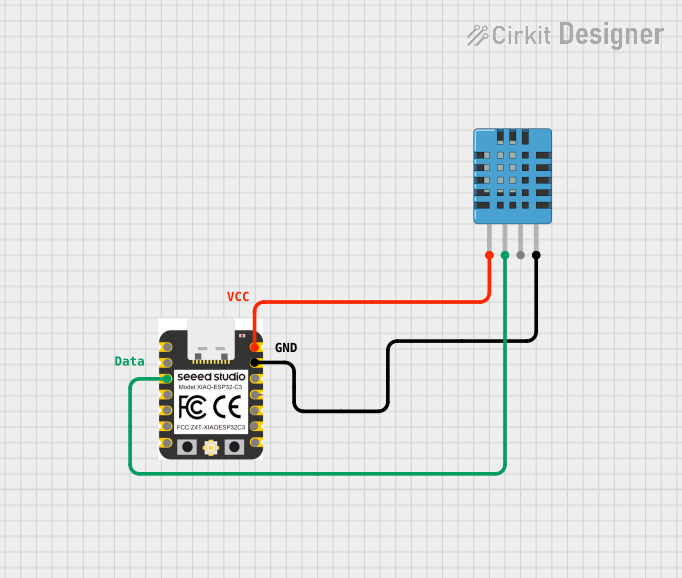
 Open Project in Cirkit Designer
Open Project in Cirkit Designer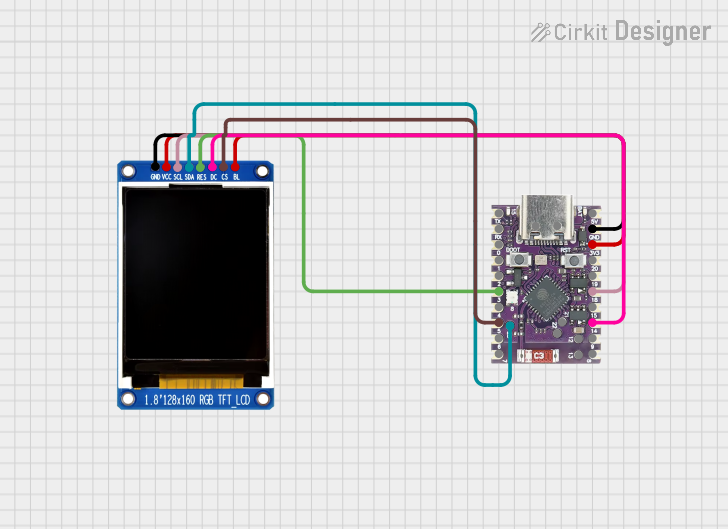
 Open Project in Cirkit Designer
Open Project in Cirkit DesignerExplore Projects Built with XIAO_ESP32S3

 Open Project in Cirkit Designer
Open Project in Cirkit Designer
 Open Project in Cirkit Designer
Open Project in Cirkit Designer
 Open Project in Cirkit Designer
Open Project in Cirkit Designer
 Open Project in Cirkit Designer
Open Project in Cirkit DesignerCommon Applications and Use Cases
- IoT devices and smart home automation
- Wireless sensor networks
- Wearable electronics
- Remote data logging and monitoring
- Robotics and automation systems
- Prototyping and educational projects
Technical Specifications
The XIAO_ESP32S3 is packed with features that make it versatile and powerful for a wide range of applications. Below are its key technical details:
Key Technical Details
| Specification | Value |
|---|---|
| Microcontroller | ESP32-S3 (Xtensa® 32-bit LX7 dual-core) |
| Clock Speed | Up to 240 MHz |
| Flash Memory | 8 MB |
| SRAM | 512 KB |
| Wireless Connectivity | Wi-Fi 802.11 b/g/n, Bluetooth 5.0 (LE) |
| Operating Voltage | 3.3V |
| Input Voltage Range | 5V (via USB-C) |
| GPIO Pins | 11 (including ADC, I2C, SPI, UART, PWM) |
| ADC Resolution | 12-bit |
| Dimensions | 21 x 17.5 mm |
Pin Configuration and Descriptions
The XIAO_ESP32S3 features a total of 14 pins, including power, ground, and multifunctional GPIO pins. Below is the pinout description:
| Pin Number | Pin Name | Functionality |
|---|---|---|
| 1 | 3V3 | 3.3V power output |
| 2 | GND | Ground |
| 3 | GPIO0 | General-purpose I/O, ADC, PWM |
| 4 | GPIO1 | General-purpose I/O, ADC, PWM |
| 5 | GPIO2 | General-purpose I/O, ADC, PWM |
| 6 | GPIO3 | General-purpose I/O, ADC, PWM |
| 7 | GPIO4 | General-purpose I/O, ADC, PWM |
| 8 | GPIO5 | General-purpose I/O, ADC, PWM |
| 9 | GPIO6 | General-purpose I/O, ADC, PWM |
| 10 | GPIO7 | General-purpose I/O, ADC, PWM |
| 11 | GPIO8 | General-purpose I/O, ADC, PWM |
| 12 | GPIO9 | General-purpose I/O, ADC, PWM |
| 13 | RX | UART Receive |
| 14 | TX | UART Transmit |
Usage Instructions
The XIAO_ESP32S3 is easy to integrate into your projects. Below are the steps and best practices for using this microcontroller board.
How to Use the Component in a Circuit
Powering the Board:
- Use a USB-C cable to supply 5V to the board. The onboard voltage regulator will step it down to 3.3V.
- Alternatively, you can power the board directly via the 3V3 pin with a regulated 3.3V supply.
Connecting Peripherals:
- Use the GPIO pins to connect sensors, actuators, or other peripherals.
- Ensure that the voltage levels of connected devices are compatible with the 3.3V logic of the XIAO_ESP32S3.
Programming the Board:
- The XIAO_ESP32S3 can be programmed using the Arduino IDE or other ESP32-compatible development environments.
- Install the necessary ESP32 board support package in the Arduino IDE.
Uploading Code:
- Connect the board to your computer via USB-C.
- Select the correct board and port in the Arduino IDE.
- Write or load your code and click the upload button.
Important Considerations and Best Practices
- Voltage Levels: Ensure all connected devices operate at 3.3V logic levels to avoid damaging the board.
- Pin Current Limits: Do not exceed the maximum current rating of the GPIO pins (typically 12 mA per pin).
- Wi-Fi and Bluetooth Usage: Avoid placing the board in metal enclosures or near strong electromagnetic interference to ensure optimal wireless performance.
- Heat Management: While the board is efficient, prolonged high-performance operation may generate heat. Ensure adequate ventilation if used in enclosed spaces.
Example Code for Arduino UNO Integration
Below is an example of how to use the XIAO_ESP32S3 to read an analog sensor and send the data over Wi-Fi:
#include <WiFi.h>
// Replace with your network credentials
const char* ssid = "Your_SSID";
const char* password = "Your_PASSWORD";
void setup() {
Serial.begin(115200); // Initialize serial communication
WiFi.begin(ssid, password); // Connect to Wi-Fi
// Wait for connection
while (WiFi.status() != WL_CONNECTED) {
delay(1000);
Serial.println("Connecting to Wi-Fi...");
}
Serial.println("Connected to Wi-Fi!");
}
void loop() {
int sensorValue = analogRead(GPIO0); // Read analog value from GPIO0
Serial.print("Sensor Value: ");
Serial.println(sensorValue);
delay(1000); // Wait for 1 second before reading again
}
Troubleshooting and FAQs
Common Issues Users Might Face
Board Not Detected by Computer:
- Ensure the USB-C cable is a data cable, not just a charging cable.
- Check if the correct drivers for the ESP32-S3 are installed on your computer.
Wi-Fi Connection Fails:
- Double-check the SSID and password in your code.
- Ensure the Wi-Fi network is within range and not restricted by MAC filtering.
Code Upload Fails:
- Verify that the correct board and port are selected in the Arduino IDE.
- Press the reset button on the board before uploading the code.
Peripherals Not Working:
- Confirm that the connected devices are compatible with 3.3V logic.
- Check the wiring and connections for loose or incorrect setups.
Solutions and Tips for Troubleshooting
- Reset the Board: If the board becomes unresponsive, press the reset button to restart it.
- Check Power Supply: Ensure the board is receiving sufficient power, especially when using multiple peripherals.
- Use Serial Monitor: Utilize the Serial Monitor in the Arduino IDE to debug and monitor the board's output.
- Update Firmware: If issues persist, consider updating the ESP32-S3 firmware to the latest version.
By following this documentation, you can effectively utilize the XIAO_ESP32S3 in your projects and troubleshoot common issues with ease.